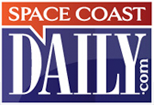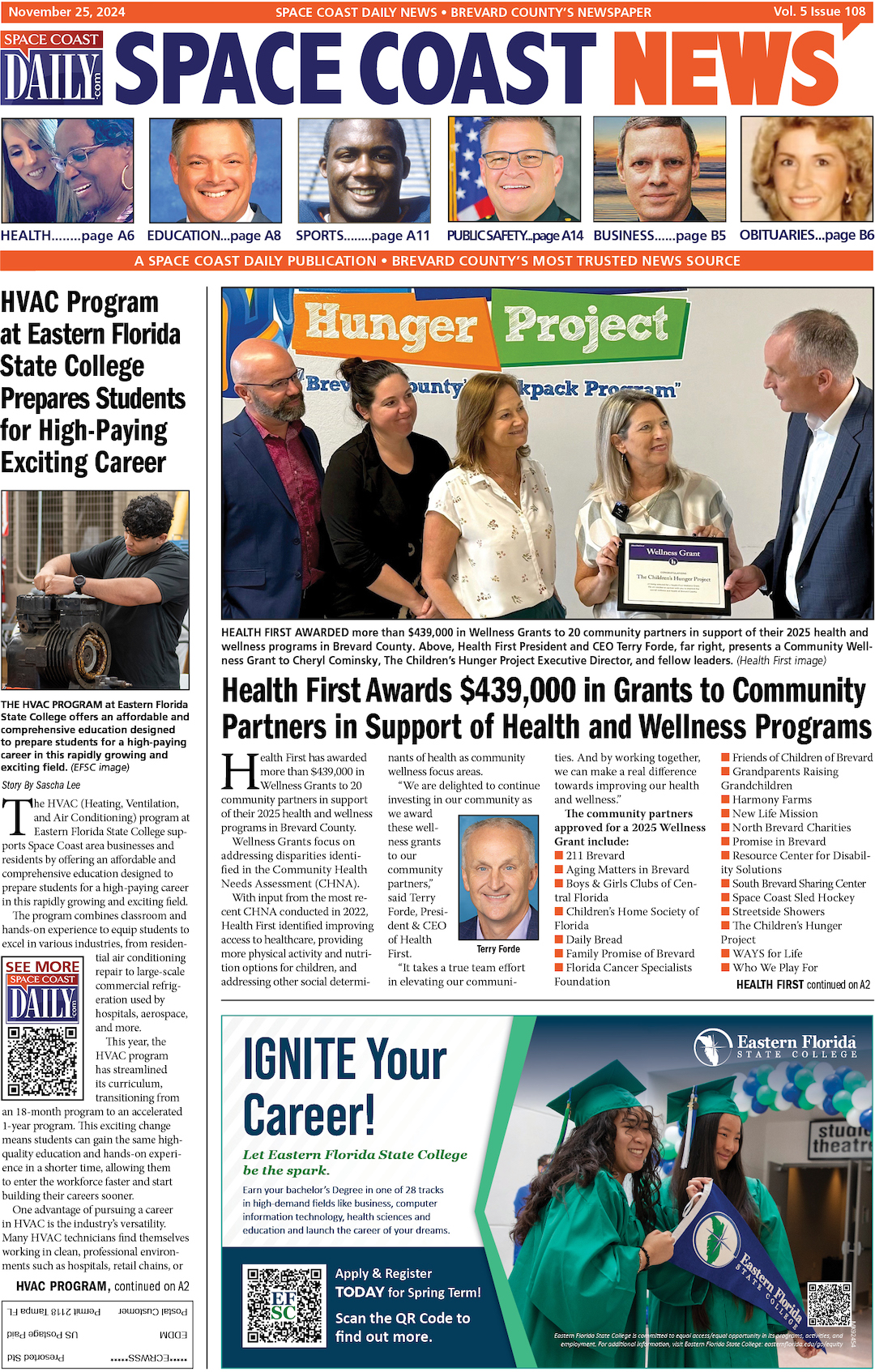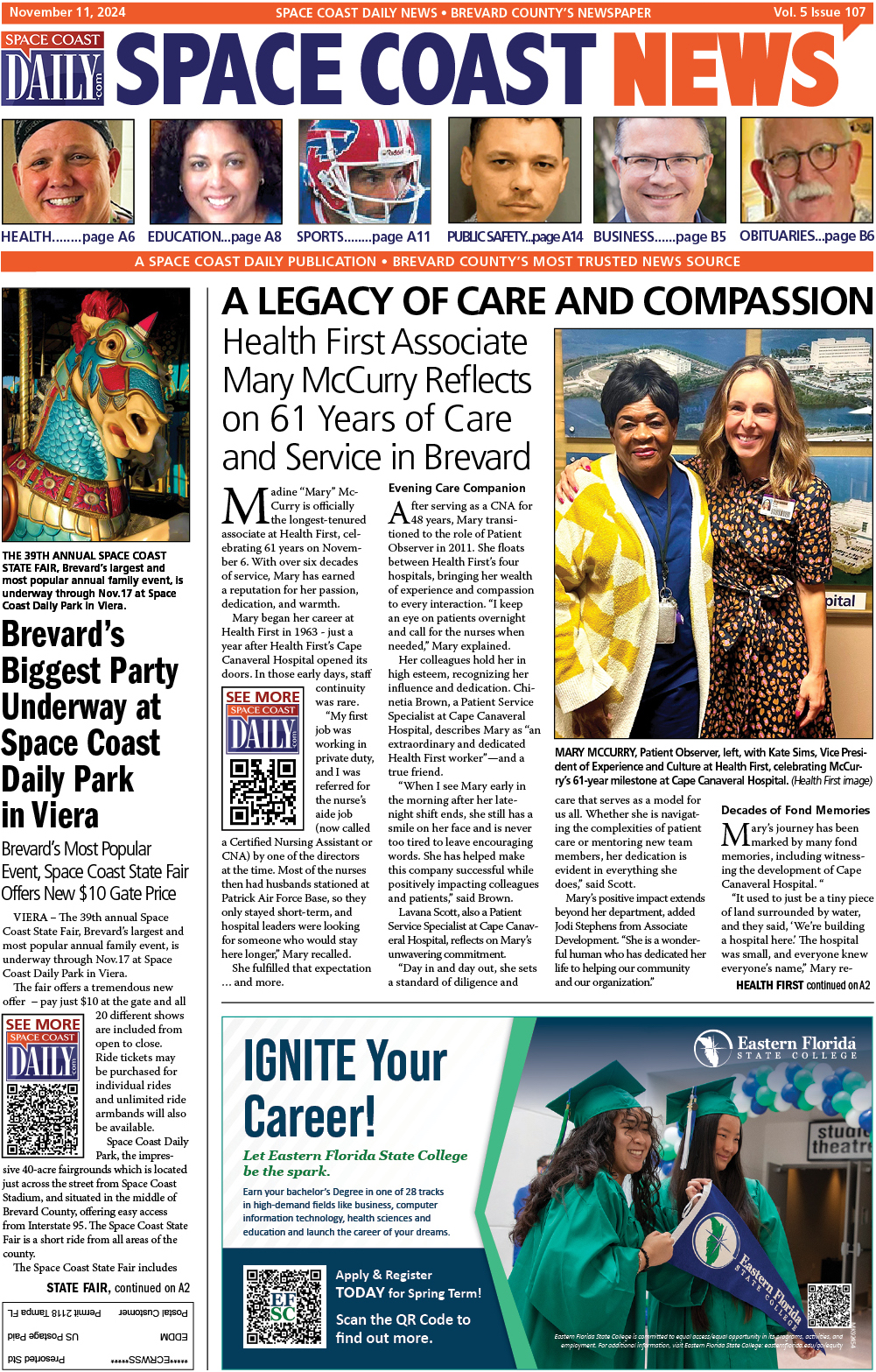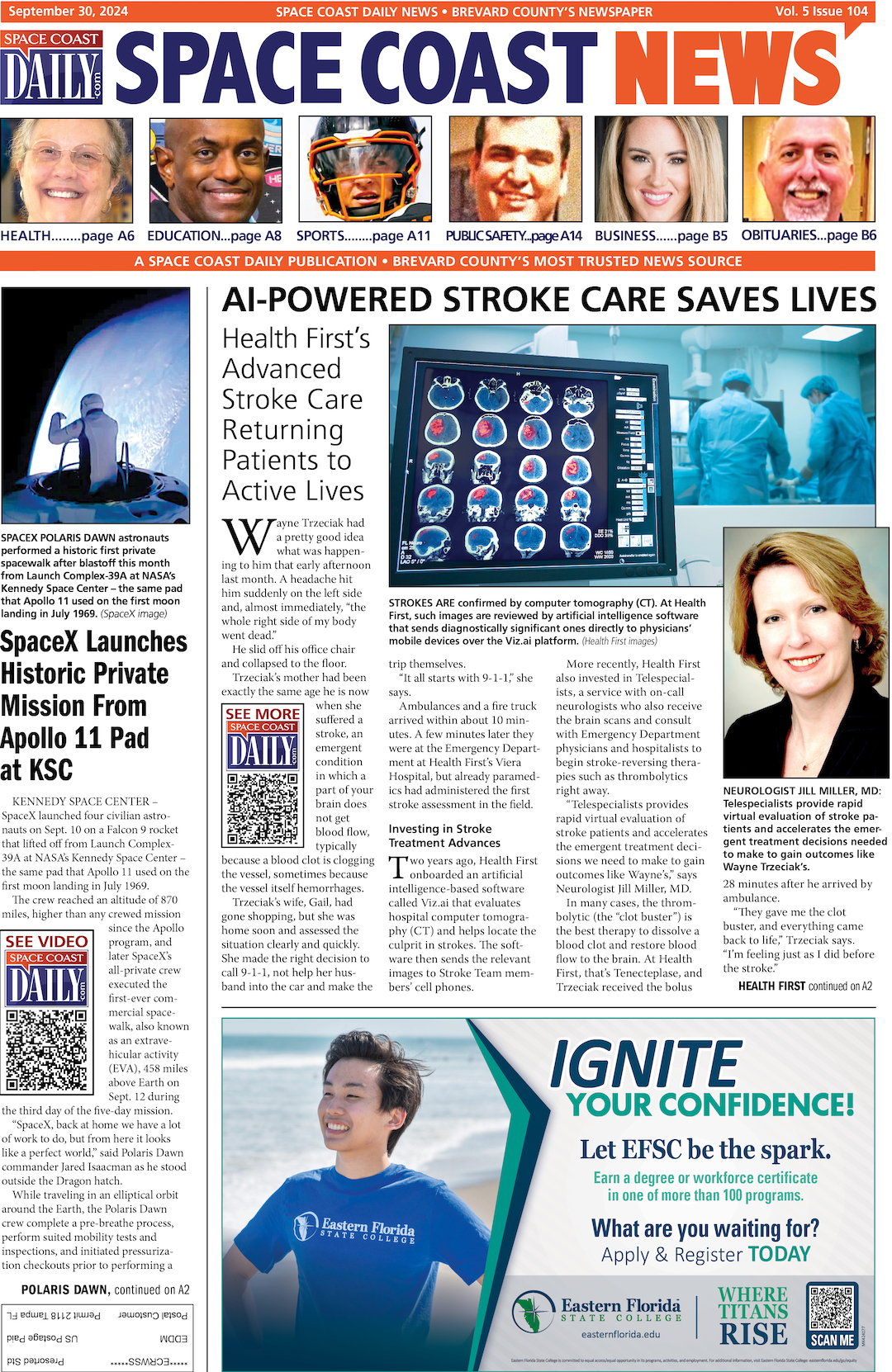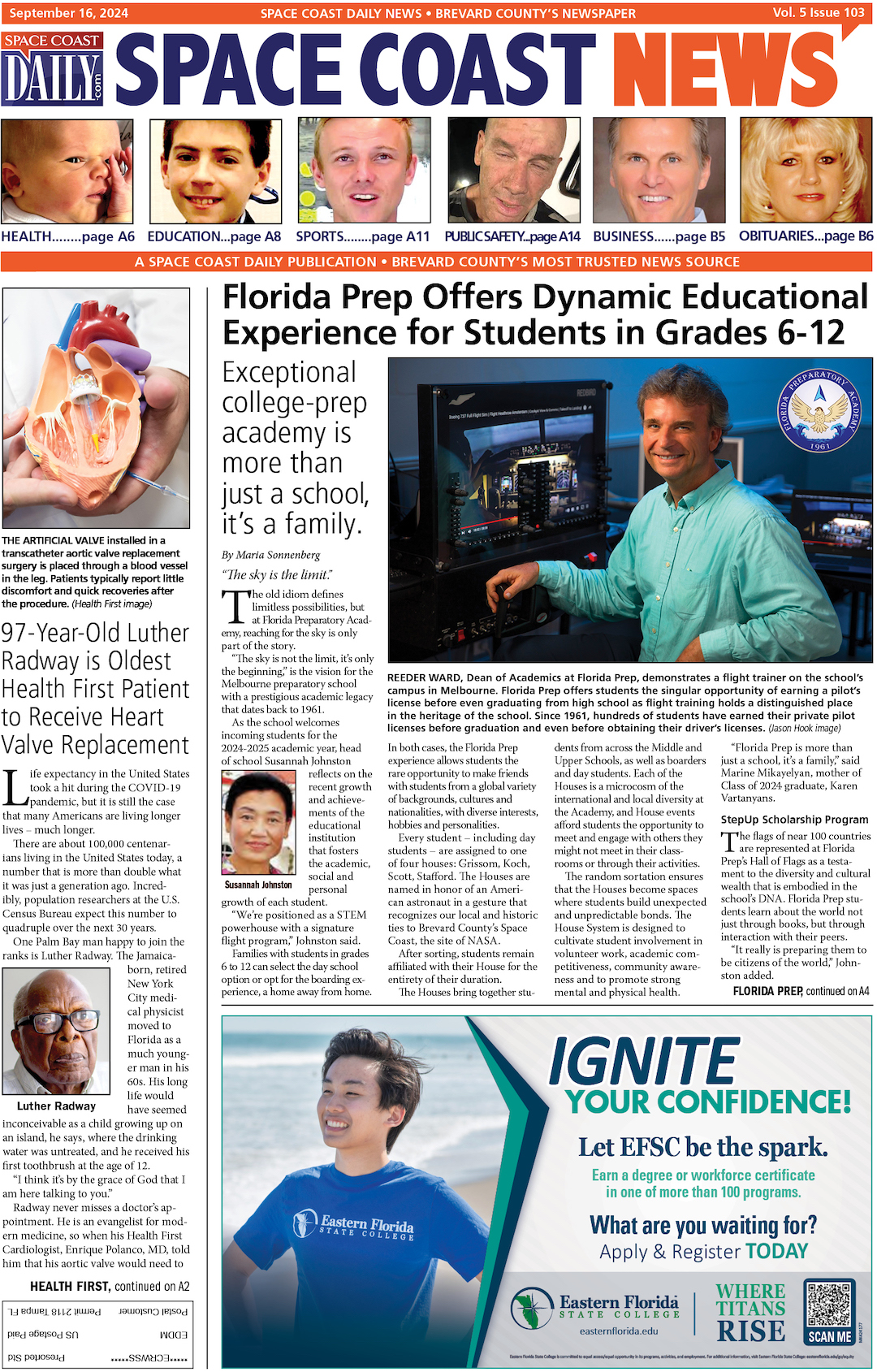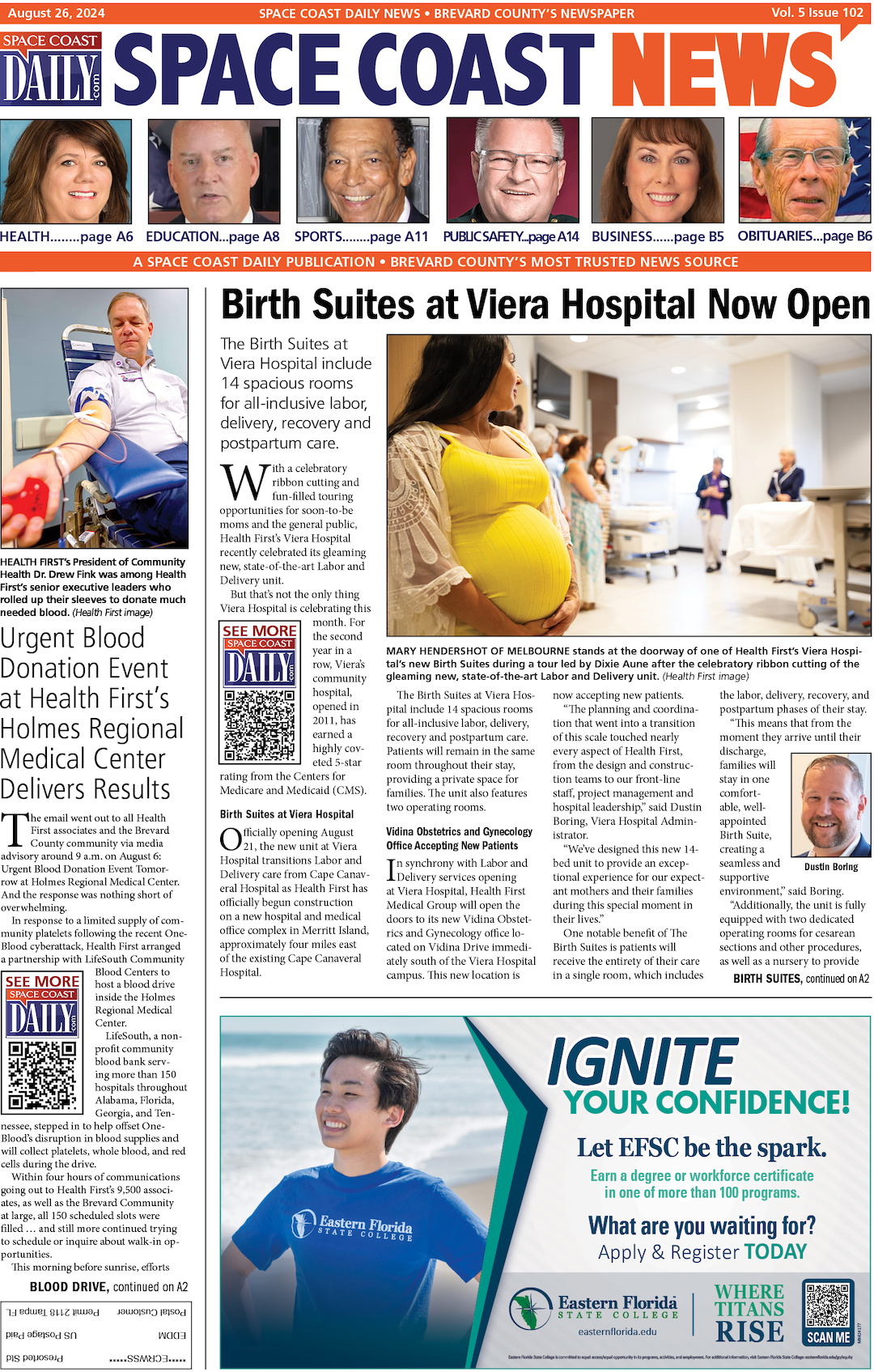WATCH: Despite Boeing Starliner Spacecraft Helium Leaks, Docking With Space Station Still on Track at 12:15 pm
By Space Coast Daily // June 6, 2024
NASA: 'Spacecraft remains stable'
WATCH: Starliner will autonomously dock to the forward-facing port of the station’s Harmony module at approximately 12:15 p.m. Thursday, June 6, and remain at the orbital laboratory for about a week.
(NASA) – The Boeing Starliner spacecraft is experiencing helium leaks ahead of is scheduled docking with the International Space Station, set for Thursday afternoon at 12:15 pm ET.
NASA astronauts Butch Wilmore and Suni Williams are safely in orbit on the first crewed flight test aboard Boeing’s Starliner spacecraft after the astronauts lifted off at 10:52 a.m. EDT Wednesday on a United Launch Alliance Atlas V rocket from Space Launch Complex-41 at Cape Canaveral Space Force Station.
“Teams have identified three helium leaks on the spacecraft,” NASA’s Johnson Space Center tweeted just over 12 hours after liftoff.
“One of these was previously discussed before flight along with a management plan. The other two are new since the spacecraft arrived on orbit. Two of the affected helium valves have been closed and the spacecraft remains stable.”
According to NASA on X, despite the leaks, the Starliner spacecraft is on track for a docking at 12:15 p.m. ET on Thursday with the ISS.
NASA and Boeing teams “will meet to review data prior to rendezvous and docking operations on the orbital outpost.”
After docking, Wilmore and Williams will be at the ISS for about a week, testing “the Starliner spacecraft and its subsystems before NASA works to complete final certification of the transportation system for rotational missions to the orbiting laboratory as part of the agency’s Commercial Crew Program,” NASA said.
As part of NASA’s Commercial Crew Program, the flight test will help validate the transportation system, launch pad, rocket, spacecraft, in-orbit operations capabilities, and return to Earth with astronauts aboard as the agency prepares to certify Starliner for rotational missions to the space station.
Starliner previously flew two uncrewed orbital flights, including a test to and from the space station, along with a pad abort demonstration.
WATCH REPLAY: NASA NASA’s Boeing Crew Flight Test mission successfully launched at 10:52 a.m. EDT on Wednesday, June 5, from Space Launch Complex-41 at Cape Canaveral Space Force Station for a historic mission of about a week to the International Space Station.

During Starliner’s flight, Boeing is monitoring a series of automatic spacecraft maneuvers from its mission control center in Houston. NASA teams will monitor space station operations throughout the flight from the Mission Control Center at the agency’s Johnson Space Center in Houston.
“Flying crew on Starliner represents over a decade of work by the Commercial Crew Program and our partners at Boeing and ULA,” said Steve Stich, manager, Commercial Crew Program, at NASA’s Johnson Space Center in Houston.
“For many of us, this is a career-defining moment bringing on a new crew transportation capability for our agency and our nation. We are going to take it one step at a time, putting Starliner through its paces, and remaining vigilant until Butch and Suni safely touch down back on Earth at the conclusion of this test flight.”
Starliner will autonomously dock to the forward-facing port of the station’s Harmony module at approximately 12:15 p.m. Thursday, June 6, and remain at the orbital laboratory for about a week.

Wilmore and Williams will help verify the spacecraft is performing as intended by testing the environmental control system, the displays and control system, and by maneuvering the thrusters, among other tests during flight.
After a safe arrival at the space station, Wilmore and Williams will join the Expedition 71 crew of NASA astronauts Michael Barratt, Matt Dominick, Tracy C. Dyson, and Jeanette Epps, and Roscosmos cosmonauts Nikolai Chub, Alexander Grebenkin, and Oleg Kononenko.
NASA’s arrival and in-flight event coverage is as follows (all times Eastern and subject to change based on real-time operations):
Mission coverage will continue on NASA Television channels throughout Starliner’s flight and resume on NASA+ prior to docking.
Thursday, June 6
9:30 a.m. – Arrival coverage begins on NASA+, the NASA app, and YouTube, and continues on NASA Television and the agency’s website.
12:15 p.m. – Targeted docking
2 p.m. – Hatch opening
2:20 p.m. – Welcome remarks
3:30 p.m. – Post-docking news conference at NASA Johnson with the following participants:
■ NASA Associate Administrator Jim Free
■ Steve Stich, manager, of NASA’s Commercial Crew Program
■ Jeff Arend, manager for systems engineering and integration, NASA’s International Space Station Office
■ Mark Nappi, vice president and program manager, Commercial Crew Program, Boeing
Coverage of the post-docking news conference will air live on NASA+, NASA Television, the NASA app, YouTube, and the agency’s website.
■ 5:50 p.m. – NASA Administrator Bill Nelson, Deputy Administrator Pam Melroy, Associate Administrator Jim Free, Associate Administrator for Space Operations Ken Bowersox, and Johnson Space Center Director Vanessa Wyche will speak with Wilmore and Williams about their launch aboard the Starliner spacecraft.
Coverage of the Earth to space call will air live on NASA+, NASA Television, the NASA app, YouTube, and the agency’s website.
Saturday, June 8
■ 8:50 a.m. – NASA astronauts Wilmore and Williams will provide a tour of Starliner.
Coverage of the in-orbit event will stream live on NASA+, NASA Television, the NASA app, YouTube, and the agency’s website.
Monday, June 10
■ 11 a.m. – Williams will speak to students from Sunita L. Williams Elementary School in Needham, Massachusetts, in an event aboard the space station.
Coverage of the Earth to space call will air live on NASA+, NASA Television, the NASA app, YouTube, and the agency’s website.
Tuesday, June 11
■ 3:15 p.m. – Wilmore will speak to students from Tennessee Tech University in an event aboard the space station.
Coverage of the Earth to space call will air live on NASA+, NASA Television, the NASA app, YouTube, and the agency’s website.
CLICK HERE FOR BREVARD COUNTY NEWS
